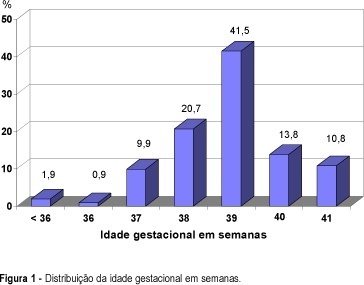Revista Brasileira de Ginecologia e Obstetrícia. 1998;20(10):551-555

Purpose: to assess the validity of fetal weight estimation by a method based on uterine height — Johnson’s rule. Methods: one hundred and one pregnant women and their newborn children were studied. The fetal weight was estimated using an adaptation of Johnson’s rule, which consists of the clinical application of a mathematical model to calculate the fetal weight based on the uterine height and the height of fetal presentation. The estimated weight was obtained on the day of delivery and was compared to the weight observed after birth. This, in turn, was the control of the analysis of validity of the method used. On the same date, a detailed obstetrical ultrasonography (US) was conducted which included the fetal weight, calculated by the use of Sheppard’s tables. This weight, estimated by US, was compared to the birth weight. Results: the results have proven that the clinical estimate used in this study has a similar value to that of the US calculation of birth weight. The accuracy of the clinical method, with variations of 5%, 10% and 15% between estimated and observed weights, was 55.3%, 73% and 86.7%, respectively. Those of the US were 60.7%, 75.4% and 91.1%, respectively. When comparing both sets of figures, values were not different from a statistical standpoint. Conclusion: the clinical evaluation has shown to be accurate, similarly to the US, when calculating the birth weight.
Search
Search in:


Comments